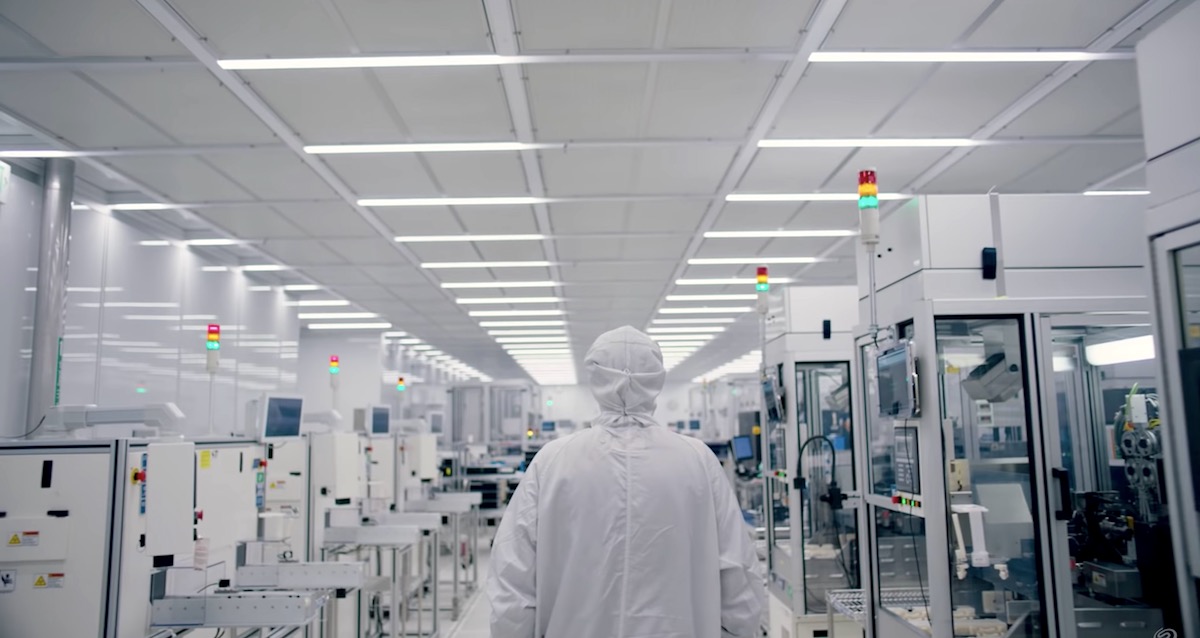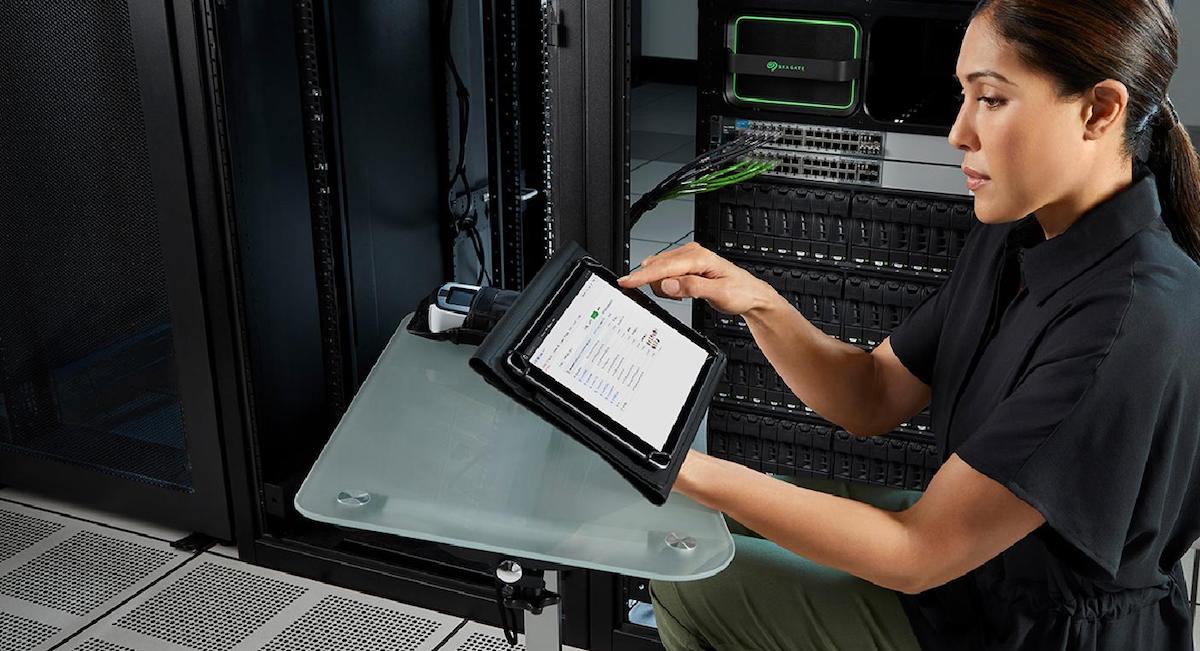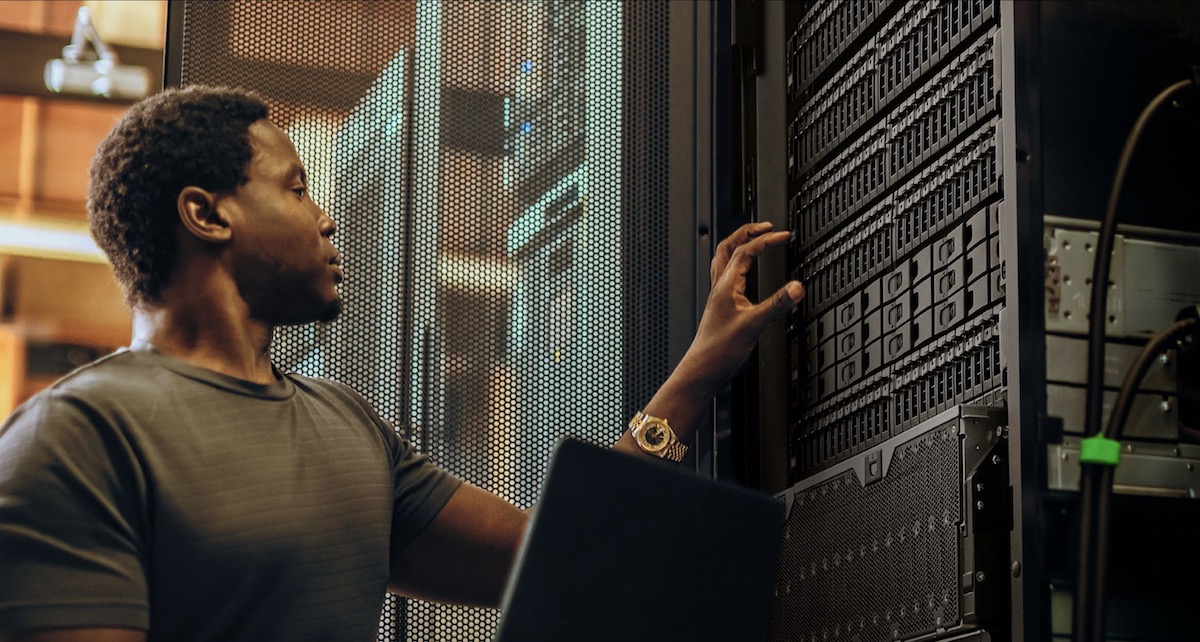
At IFSEC 2017, Europe’s leading security expo, Seagate surveillance engineering and applications expert Stephen Jones joined a thought leadership panel to discuss the future of video surveillance with Atul Rajput, AXIS Communications; Andy Coles, Hikvision; and Jonathan Rickard, Panasonic. Here Stephen shares his thoughts from the panel at IFSEC 2017.
As someone who’s worked in surveillance for over thirty years I’ve seen how the industry has evolved and adapted as technology continues to shape the world we live in. When I started out, security cameras were simply analogue devices — but thanks to advancements in HD TV, video compression techniques and, of course, Power over Ethernet, today’s standard is IP cameras and the industry is on the cusp of evolution again. The video surveillance infrastructure is made up of a complex ecosystem that includes cameras, storage, software, miscellaneous hardware, and professional services — and with the market expected to increase to $40.8 billion by 2020, all areas of the industry continue to evolve at pace.
I recently attended IFSEC 2017 in London to take part in a panel discussion along with experts from Hikvision, AXIS Communications and Panasonic to discuss some of the trends and technologies that will shape video surveillance. We came to the conclusion that the biggest opportunities will be in adapting to new technological practices, particularly around the Internet of Things (IoT), cloud storage, machine learning and artificial intelligence (AI). So how exactly will these trends shape video surveillance in the future?
The explosion of connected devices
Recently, Seagate and IDC released a white paper titled Data Age 2025 looking at the future of data and the factors that will contribute to worldwide data exploding to 163ZB by 2025. One of the biggest reasons for the increase in data is the increase in connected devices as a result of the IoT. Specifically within surveillance we are seeing this occur already, thanks to drones and other wearable security devices becoming connected and coming online. With so many more transactions being created and tracked it’s crucial to think about how the surge in data will be managed. Here at Seagate we’re tackling that challenge at every level, from continuing to lead in cloud storage advancements, to breakthroughs in systems for high-performance computing and data centers, all the way to in-field data capture and management; for example, we have recently partnered with DJI to create the Seagate DJI Fly Drive, which allows drone pilots to efficiently back up their photo and video content on location thanks to an integrated MicroSD card slot.
With the IoT being one of the biggest drivers in our data age, we need to start looking at how these connected devices (whether they’re cameras or sensors) will interact with people too – and what opportunities can be created as a result. During our panel discussion we talked about the rise of smart cities, such as Singapore, and how using the data from connected devices and cameras relayed in real time would help provide feedback to emergency services or planning officials on where public services are required. Similarly, there’s huge potential for retailers to use heat mapping sensors and data from cameras to track real time footfall in order to manage the layout of their store better and provide a more enjoyable, safer shopping experience.
Video in the cloud
However, as I’ve alluded to already, the rise of connected devices is also generating a substantial volume of data. This poses the question of where and how this data can be stored; and conversations are already taking place around storage and access to video in the cloud.
As consumers we’ve become very familiar with the cloud – maybe without even realizing it – thanks to subscription services such as Netflix and Spotify. Cloud storage is also becoming a hot topic within video surveillance too and there are many benefits to consider. Firstly, the data is stored in a central, shared system so users can access the content quickly and easily from wherever they are. Secondly it’s possible to improve a cloud-based product on an ongoing basis, often in real-time, and once improvements have been made they are immediately visible and available to customers.
A key driver of the shift to cloud-based, fast-access, and truly mobile data usage is that data has increasingly become a critical influencer for not only our businesses but also our lives in all aspects. IDC’s research revealed that data usage is changing and it now has to be analyzed by its level of criticality. Going back to smart cities, real-time data from traffic cameras and traffic light sensors is crucial for ensuring people don’t end up in accidents or cause huge traffic jams for example. Rapid access to data through a cloud-based service could make a significant difference in effectively delivering these kinds of hyper-critical solutions.
What was clear from the panel discussion is that whilst video in the cloud is already here, there are still some countries, such as the UK, that are struggling with adoption. This is predominately down to bandwidth limitations in order to upstream video to the cloud but will need to be changed if we will need to rely on it.
Artificial Intelligence for real-time analytics
The use and integration of data in businesses and our lives is also quickly increasing the need for real-time data. As such, data is delivered to not only inform but also determine actions — sometimes autonomously.
Consequently machine learning and AI is causing a huge buzz within video surveillance. In fact, at the recent IFSEC event in London the number of presentations, panel discussions and vendors talking about AI was staggering. And it’s no wonder when the opportunity for improving applications for safety and security is huge: if security teams and emergency services can use the data from AI to make smart predictions, it will help increase preventative and real-time safety from our surveillance activities, rather than being seen primarily as a reporting process for forensic insights. Thanks to AI we’ll see the applications becoming more proactive, rather than reactive, as a result of machine learning being able to predict security and surveillance situations before they happen.
However, the entire surveillance industry needs to keep building communication among the different technology and application providers, to cooperate and develop systems that work together to enable predictive systems that can benefit safety efforts before an issue arises. For example combining traffic data, control systems data and weather data can help predict when a road accident may happen and warnings can be issued to drivers to ensure an incident doesn’t occur.
Over time, the demand for intelligent video analytics and systems is only going to increase as more and more industries realize the benefits for its application. It’s up to all of us to work with our partners and customers to ensure that they are ready for this change and are advised of the best way to manage and store the data generated to meet their needs.







